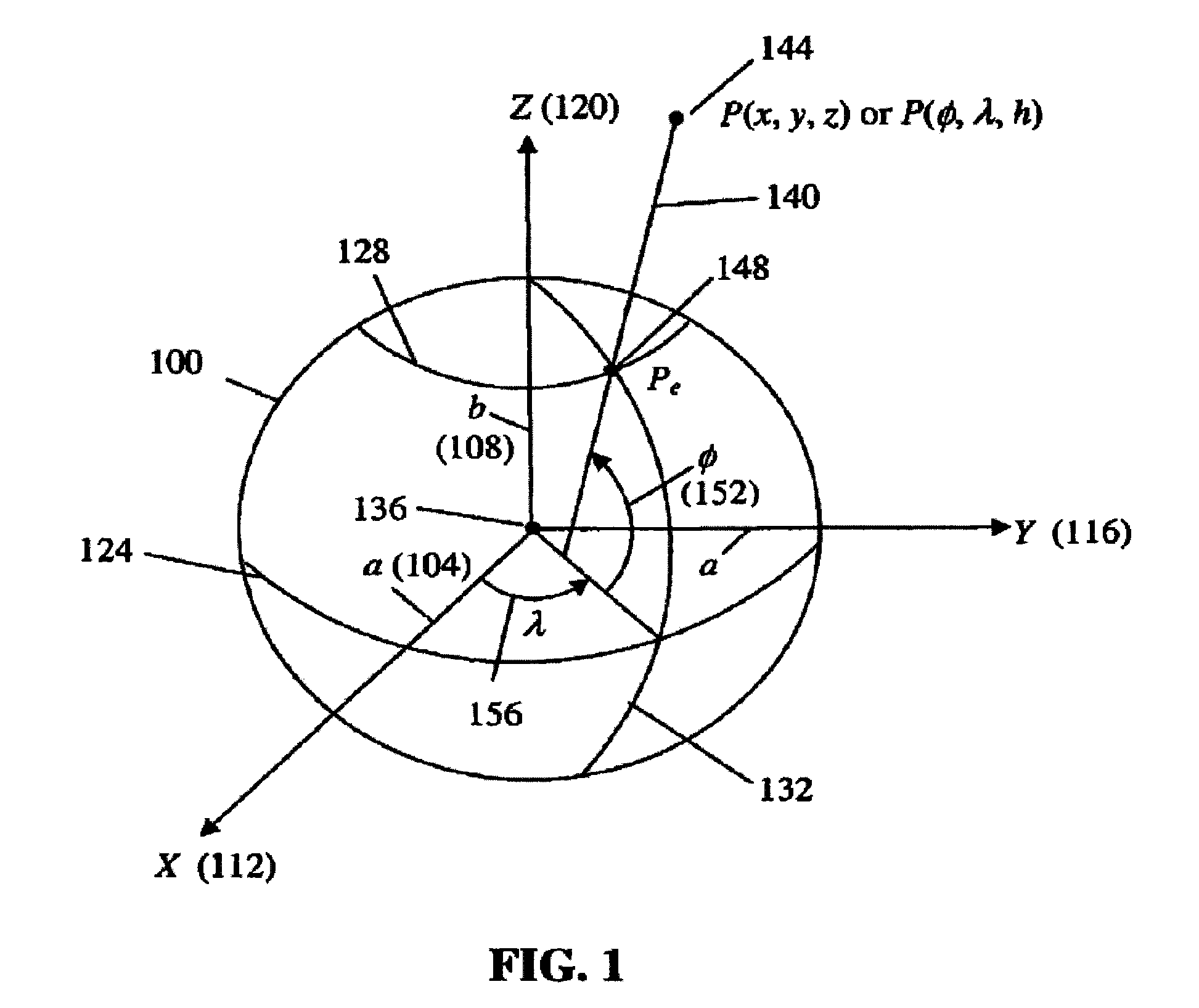System and method of simulating with respect to spheroid reference models using local surface coordinates
a reference model and local surface coordinate technology, applied in the field of embedded systems and modeling and simulation systems, can solve the problems of limiting the level of detail of complex formulations, too expensive or too dangerous to test, practice or use to support analytic studies, and affecting the accuracy of simulation results
- Summary
- Abstract
- Description
- Claims
- Application Information
AI Technical Summary
Problems solved by technology
Method used
Image
Examples
Embodiment Construction
[0024]Many application domains, for example, simulations, simulators, embedded systems, operational planning and assessment tools, real-time mission planning, weather prediction, fire fighting, and emergency response, need to point below, on, or above the surface of the Earth. Applications in these domains create and control elements, referred to as entities. Examples of entities in a combat simulation are aircraft, tanks, missiles, and personnel. Commonly, simulation applications control more than one entity. These applications need a well-defined coordinate system. To this end, the present invention features a curvilinear orthogonal local surface coordinate system that provides a description of the location of entities in a three-dimensional coordinate system with respect to a reference model.
[0025]FIG. 1 shows an embodiment of a reference spheroid 100 used to provide a representative expression of the shape of a planetary body such as the Earth. Generally, the spheroid 100 is a c...
PUM
 Login to View More
Login to View More Abstract
Description
Claims
Application Information
 Login to View More
Login to View More - R&D
- Intellectual Property
- Life Sciences
- Materials
- Tech Scout
- Unparalleled Data Quality
- Higher Quality Content
- 60% Fewer Hallucinations
Browse by: Latest US Patents, China's latest patents, Technical Efficacy Thesaurus, Application Domain, Technology Topic, Popular Technical Reports.
© 2025 PatSnap. All rights reserved.Legal|Privacy policy|Modern Slavery Act Transparency Statement|Sitemap|About US| Contact US: help@patsnap.com



